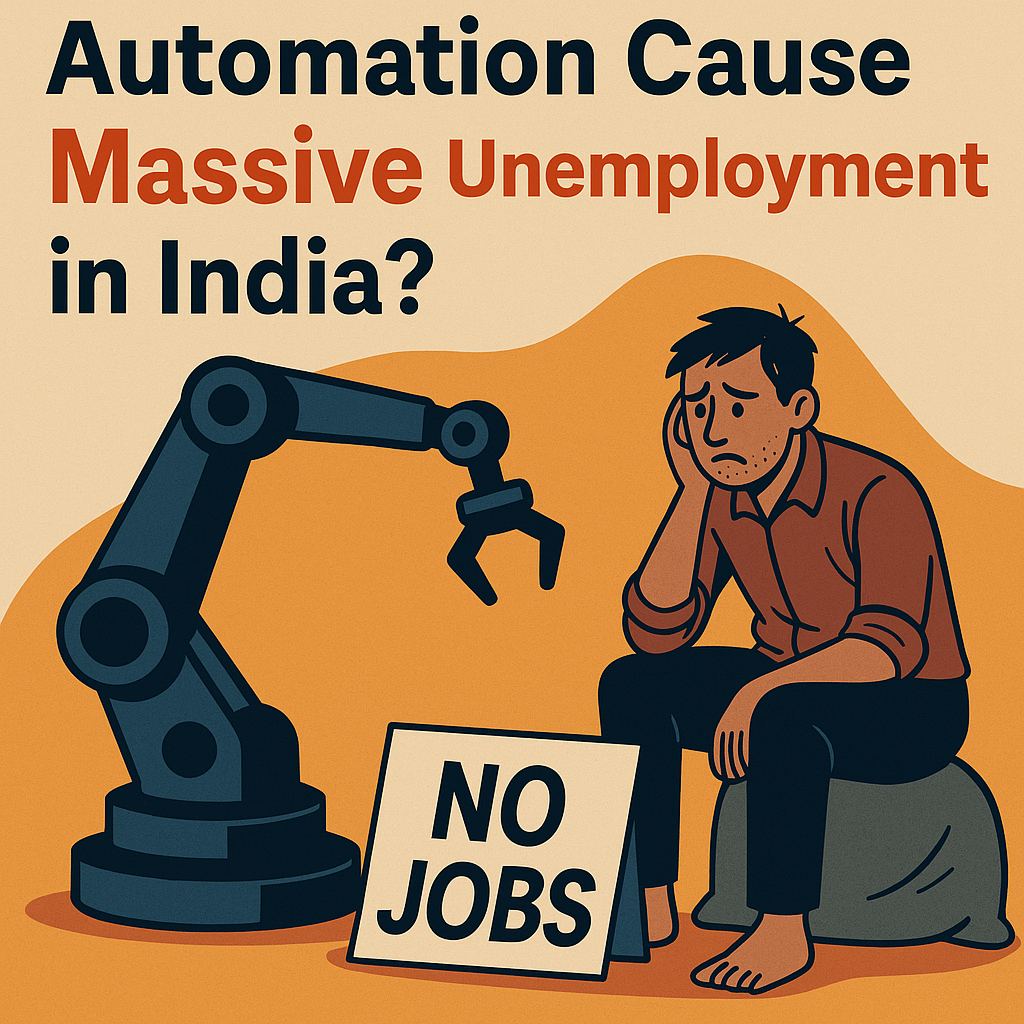Let’s dive deeper into the impact of automation from an Indian perspective, considering both threats and opportunities in the unique context of India’s economy, workforce, and development goals.
1. Current Employment Landscape in India
✅Over 50% of India's workforce is employed in agriculture, often informally.
✅A large portion of jobs are in low-skill or semi-skilled sectors like manufacturing, retail, logistics, and construction.
✅Only about 20-25% of the workforce is in organized sectors like IT, finance, and formal services.
✅India also has one of the youngest populations in the world — adding millions of job seekers each year.
2. Where Automation Could Disrupt Jobs
A. Manufacturing & Assembly Line Work
✅Auto, textile, electronics industries already use robotic automation.
Example: Maruti Suzuki uses robots in its factories—potentially reducing demand for low-skill labor.
B. BPO & Customer Service
✅Voice bots and AI chat assistants can replace basic customer support roles, where India has been a global leader.
C. Retail & Warehousing
✅Companies like Amazon and Flipkart are automating inventory management, packaging, and logistics.
D. Transport
✅Autonomous vehicles are still far off in India, but automation in fleet tracking, dispatch, and traffic management is reducing manual coordination jobs.
3. Opportunities Created by Automation
A. IT & AI Sector Boom
India is already strong in software services. Automation brings demand for:
✅AI/ML engineers
✅Data scientists
✅Automation testers
✅Cloud architects
B. MSME Digitization
✅Small businesses in India are adopting ERP systems, digital payments, CRMs, etc. (like Borg Desk ERP).
✅This creates demand for tech support, trainers, digital consultants.
C. Gig & Platform Economy
✅Jobs may shift to freelance/gig work via platforms like Swiggy, Urban Company, Zomato, and Upwork.
D. Agri-tech
✅Precision farming, drone monitoring, and smart irrigation create tech-based rural jobs.
4. Challenges Unique to India
A. Skilling Gap
✅India’s education and vocational training often don’t match the tech-driven job market.
✅NSDC and Skill India are trying, but execution is patchy.
B. Digital Divide
✅Rural areas lag in access to internet, electricity, and digital tools.
✅Without inclusion, automation may deepen income inequality.
C. Informal Sector Vulnerability
✅Over 90% of India's workforce is informal—without safety nets, job loss due to automation can be devastating.
5. What Can Be Done? Policy Recommendations:
✅Massive skilling & re-skilling programs focused on future skills (AI, robotics, digital marketing, etc.)
✅Incentives for job-creating automation: Encourage tech that enhances human productivity instead of replacing it.
✅Public-private partnerships: Leverage tech firms to design training and offer apprenticeships.
✅Focus on education reform: Add digital literacy, coding, critical thinking from school level.
Automation will change jobs in India, not just eliminate them. The risk is short-term displacement, but the long-term impact depends on how fast India adapts through education, skilling, policy, and innovation.



.png)

No comments found
Post your comment